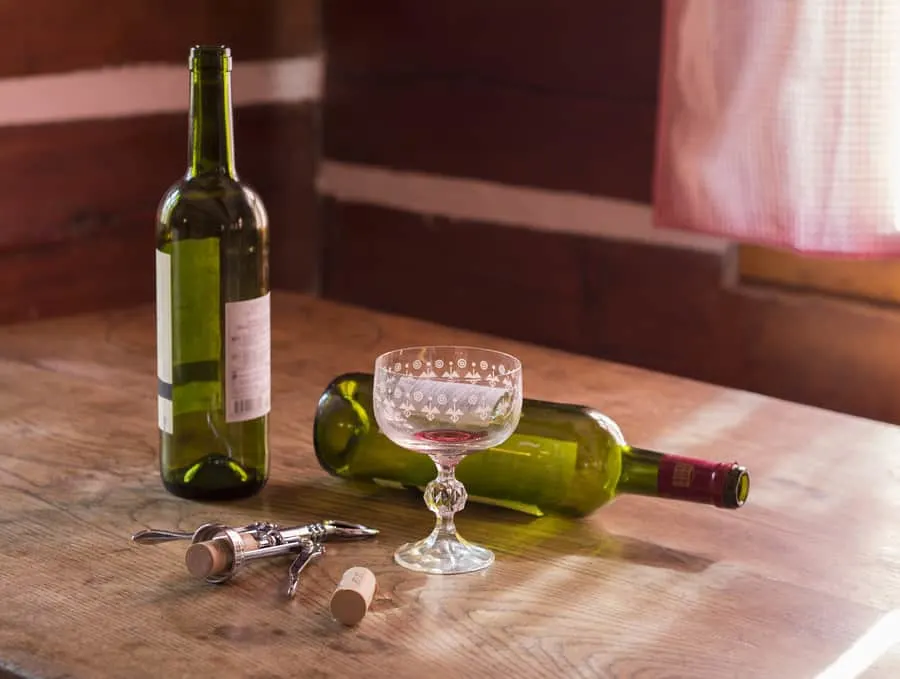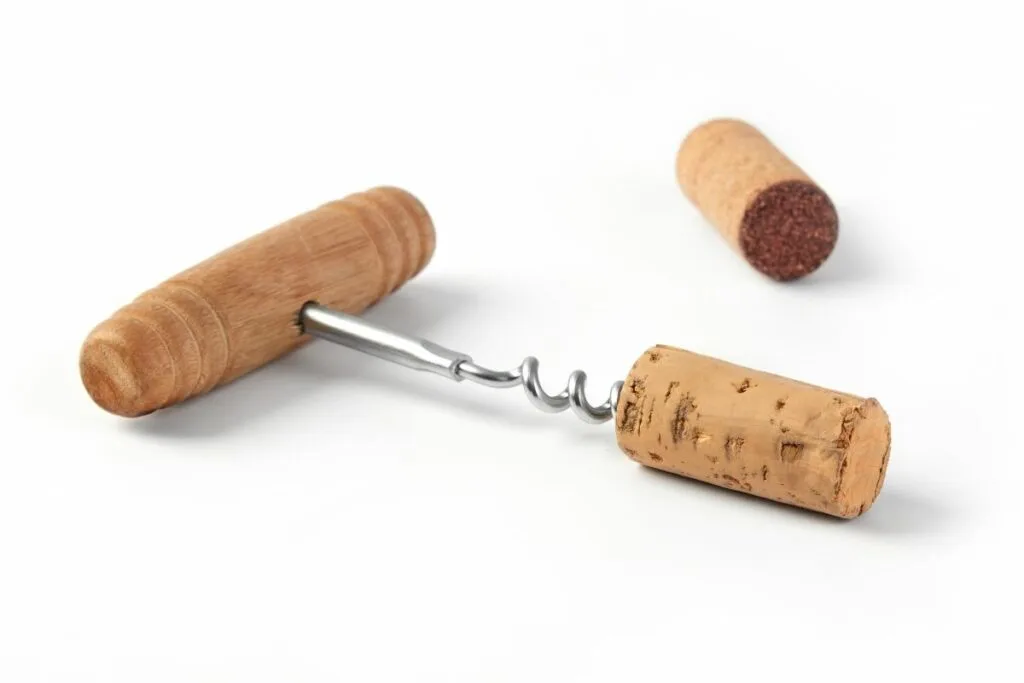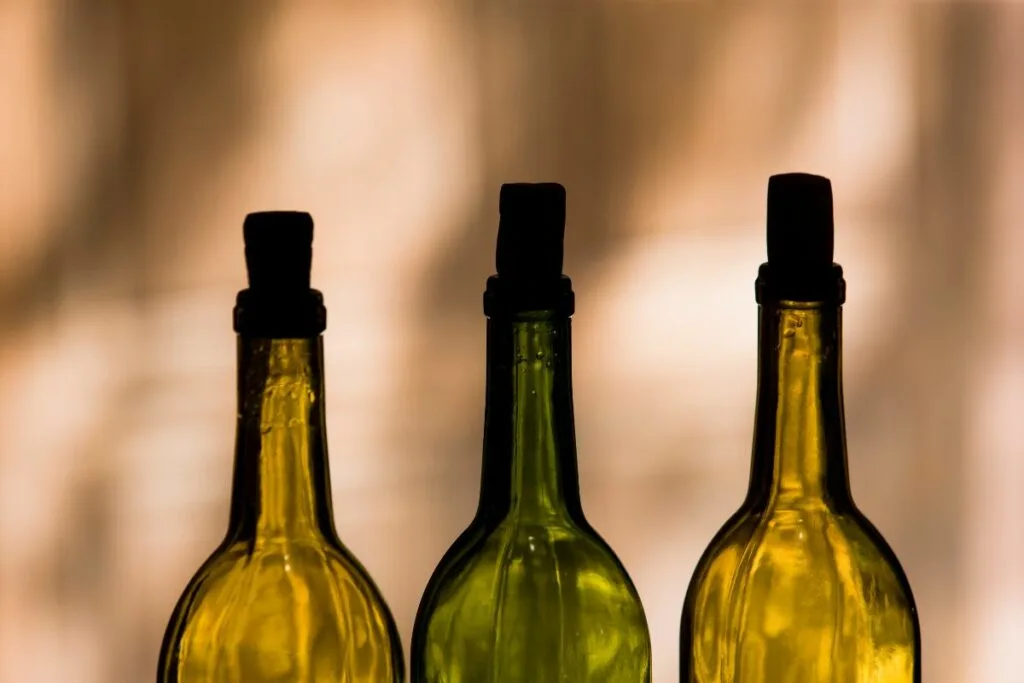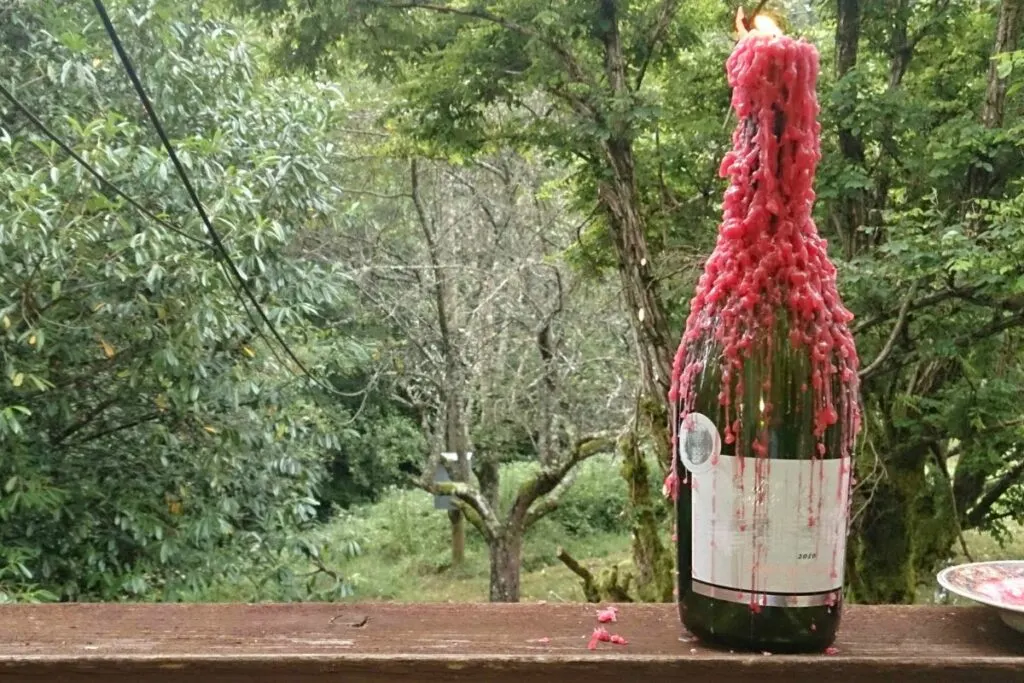As an Amazon Associate, I earn from qualifying purchases with no additional costs for you.
Many of us are concerned about how we dispose of our garbage and, in particular, how we dispose of our wine bottles and corks. We would all love to recycle but sometimes, it just seems too complicated to navigate. The truth is, recycling could be an option for your wine bottles and corks if you make the right moves.
Wine bottles and corks can be recycled in most states as long as you follow specific rules and guidelines dependent upon your local and state policies. In some states, you can also earn money for wine items recycled which will further incentivize you to protect the environment while supporting the wine industry.
All of us know that recycling can make a huge difference in our planet, helping to save energy and better utilize our finite resources. Specifications for recycling can change from state to state, but general rules for recycling can be divided into two particular categories:
- mixed paper or cardboard
- metal, glass, plastic, and cartons
Things that aren’t recyclable require you to have a plan. For example, batteries, light bulbs, smoke alarms, and large appliances need to be disposed of properly but can’t go through the common channels. They need to be disposed of in a special way, requiring a bit of research on your part to find what this entails in your particular area.

TIP: If you want to check out the best refrigerator for wine storage, I recommend trying out the Avation (18 bottles) compressor refrigerator with Wi-fi smart app control cooling system. You can find this refrigerator by clicking here (Amazon link).
Recycling Glass Wine Bottles
Some states have separate glass recycling programs as a component of their environmental stewardship efforts. In other words, the glass bottles must be dropped off by the consumer at specific drop-off locations in their local area. Containers are then transported to a glass recycling processor and returned within 24 hours so they can be ready for use again.
Glass recycling drop-off locations are becoming increasingly popular and effective in yielding high-quality glass. The United States Environmental Protection Agency is an avid proponent of glass recycling.
They point out that the processing of recycled glass through the sort-separation process is a much more environmentally friendly approach.
This simply means not leaving the glass on your doorstep with other recycled items. Why not? They say that glass contained in curbside recycling contaminates other recyclable materials and makes glass a much less valuable recyclable material. Adding that separating glass from other recyclable materials is the most effective way to recycle it.
Recommendation box: Everything you need to enjoy your wine as much as possible. All recommended products are personally tested and regularly used by experts from this website (Amazon links):
> Ivation Wine Cooler – Energy-efficient wine cooler for 18 bottles with Wi-fi smart app control cooling system.
> Wine Rack – Beautiful, elegant wood rack for up to 7 bottles and the choice of vertical or horizontal storage.
> Durand Wine Opener – Classic vintage wine opener (we like all these classic staff).
> YouYah Iceberg Wine Decanter – The most beautiful and handy wine decanter we personally use.
> Bormioli Rocco Wine Glasses – A set of eight elegant and traditional wine glasses made in Italy.
> Vintorio Wine Aerator – Simple but really useful wine aerator for a reasonable price.
> The Original Vacu Vin Wine Saver – The best wine saver on the market in a package with two vacuum stoppers and two wine servers.
And if you want to become a true connoisseur of wine, we recommend reading the book Wine Folly: The Essential Guide to Wine (Amazon link), where you will find all the information you need about winemaking, wine varieties, flavors, and much more.
Does discontinuing the placement of glass in curbside single-stream recycling bins keep people from recycling their wine bottles?
These states and counties encourage residents to continue recycling glass by using county-operated glass recycling drop-off containers strategically placed in locations throughout each district. The question is – will the residents do it?
Residents unable to take advantage of this drop-off service are encouraged to place their glass bottles in their household garbage.
So the dilemma remains that even though this approach is meant to assist with maintaining the integrity of the recycled glass – making it a more marketable and valuable resource – will people take the extra time needed to recycle their glass bottles? And if the answer is no, is it really the best plan?
TIP: To learn how light affects wine and what you can do to protect your wine, check out this helpful guide. Do you know why wine bottles are green? Find out here.
Why exactly does glass have to be separated in the first place?
Most recycling in the United States happens with the single-stream curbside collection, as mentioned above. This means that everything goes in the recycling bin together.
People tend to throw in a lot of things that should not go in the bin, such as plastic bags, used napkins, light bulbs, etc. Garbage and these “wrong” products contaminate all the other recyclables in the bin.
Trained operators have to sort through all the trash to get to the material (in this case, glass) that manufacturers want and are willing to pay for.
The multi-stream recycling process (also mentioned above) is where consumers separate their glass from other recyclables. This type of collection requires a high level of consumer education and is obviously more expensive.
However, multi-stream collected glass bypasses materials recovery facilities. 40% of glass collected from curbside collection versus 90% of glass from the multi-stream (drop-off) collections end up being recycled.
TIP: Is a wine refrigerator the best way to store wine? Check out this helpful article for ideas. Can cheap wine be stored and aged? Check out this awesome article to find out.
Wine bottle recycling practices by state:
- Georgia operates under a multi-stream collection system for glass – and has since 2017 – with multiple drop-off locations in various counties and districts. 2017 is an important factor because this is when China put restrictions on its paper and plastic imports causing the entire recycling industry to try to keep pace. These restrictions actually caused lower demand for recyclables. Georgia has also established a scholarship fund for people interested in careers in the recycling field.
- California operates under a single stream curbside glass pick up where glass is put in with other recyclables at the home.
- Pennsylvania has deemed glass “unrecyclable” and is sadly telling residents that glass has to go in the trash as of now. Curbside haulers have slowly phased away accepting glass. There are however glass recycling events being held throughout many counties there.
- Alabama: Glass bottles in Alabama get crushed down to less than a 3/8 of an inch product. It is a mixture of glass, sand, and water traveling through a glass pulverizer. Public demand for glass recycling remains steady in the area. Birmingham’s glass recycler AEC, has had success in looking for better ways to make glass recycling work in the state.
- Florida: Florida has a state goal of recycling 75% of all waste in 2020. Despite the state’s push for higher recycling rates, a lot of glass ends up in the state’s landfills, even when placed in the recycle bins. For example, in Broward County, all recyclables go in the same bin (single-stream). As mentioned above, this often contaminates the glass and 30% of recycling in this county ends up in the landfill. In Palm Beach County Florida, even though they use a multi-stream system (separating their glass) food and other contaminants still have an effect on the glass, so much so that 11% of it still ends up in the landfill.
Recycling Wine Corks

Cork Type – Synthetic vs. Natural
There are two main types of wine corks: synthetic and natural. The advantage of synthetic corks is that they are more durable and less likely to break apart during extraction.
Some wineries have moved towards using them because the man-made substance will not “cork” or taint the wine. This can happen naturally with cork material. Natural corks are more brittle. Natural corks are a must for vintage wines that need to age.
Composite cork and glass cork
Other types of cork material worth mentioning are composite cork and glass cork. The composite cork is also known as an agglomerated cork. This wine bottle stopper is made of particles or granules of natural cork pressed together and bound by FDA-approved glue.
Glass corks were developed in Germany and designed to look like decanter stoppers. They achieve a tight seal by way of a plastic O-ring that allows for a tight fit between stopper and bottle. These corks have not been embraced by Americans and remain somewhat unpopular.
TIP: Are you interested in buying a wine stopper? We’ve personally tried and recommend buying one of these wine stoppers (Amazon links):
- The Original Vacu Vin Wine Saver: Our top choice. Very easy-to-use wine stopper/saver. You can enjoy a glass of fresh wine whenever you want without worrying about wasting any.
- EZBASICS Wine Saver: Great alternative to Original Vacu Vin Saver. This wine stopper keeps the flavor of wine for up to one week.
- Champagne Stopper by MiTBA: Wine stoppers for sparkling wines are different. This wine stopper seals your bottle and increases the pressure so your beverage’s bubbles won’t go to waste.
Recycling Corks
The issue with recycling wine natural wine corks is that you can’t just recycle them in the normal doorstep recycling bin. You can, however, put them in a compost bin. (Or your own personal compost pile).
They will take a long time to break down unless you break them up into small pieces or run them through a blender. Natural corks could be recycled into some great things if cork recycling was widely available.
There are an estimated 13 billion natural wine corks sold in the world each year. This is such an abundance of natural material and there are organizations working towards finding a way to recycle them.
Natural cork could be used in flooring tiles, building insulation, and other items. There are only a few organizations and businesses that are paving the way for effective cork recycling.
These cork collecting programs are sponsored by Amorim, the world’s largest producer of natural corks wine stoppers. Yemm and Hart is a flooring company that uses natural cork stoppers for flooring material.
You can actually mail your corks to their Missouri plant via UPS. It would be best to accumulate plenty before shipping.
TIP: Read this guide for 5 interesting hacks to get the wine cork back into the bottle – it’s easy when you know how! In this article, we tested different corks to see how long they last. Find the answers here.
Plastic corks are too small to recycle. They are made from plastic #7, but unfortunately, are too small to be recovered by sorting equipment, so you have to put them in the trash.
Metal screw caps can go in the recycling cart, but make sure to remove the screw cap from the bottle so they can be sorted correctly.
The great thing about natural corks is, while you may not be able to recycle them in the traditional way, there are many ways they can be put to good use.
Some are listed below:
- Companies like Recork America (the largest cork recycler in North America) takes natural corks and turns them into shoes, yoga blocks, and more. You can find all the information on their website as well as the cork drop off locations. They have recycled more than 100 million so far!
- TerraCycle takes both natural and plastic corks and turns them into products all while giving you rewards for doing so.
- Look into companies you are familiar with and already support to see if they have a system for recycling corks.
- Corks make great decorations if you are a crafty person, if you aren’t, just placing them in a lovely glass container can be a decoration and/or a great conversation piece. Especially if you are filling the container with corks from your most special occasions.
- You can also cut up or grind corks to form mulch – benefiting your garden. As explained by the Recycle Now website, “orchid growers, in particular, have used sliced corks for generations to help the plant hold onto moisture”. Breaking up your corks and adding the pieces to the soil of your potted plants will reduce the rate of water evaporation during hot summer days.
TIP: Discover the best ways to store red wine in this helpful article. It will really enlighten you and help save your red wine. Read this article for top tips from our wine expert on storing white wine.
Some States Pay for Wine Products Recycling

Recycling 15 wine bottles save enough energy to power an air conditioner for an hour or a laptop for more than a day.
We know the long-term benefits are even more promising (creating jobs and reducing water and air pollution to name a few). According to the Environmental Protection Agency (EPA) each household spends just two minutes a day, on average, on recycling.
TIP: Can you keep wine without using a cork for storage? This article discusses 8 effective ways! Can you decant wine, and which wines should you decant? Read this interesting article to find out.
TIP: If you are interested in buying a wine decanter, I recommend purchasing these two top-quality decanters:
- USBOQO Wine Decanter (check it out on Amazon & read customer reviews)
- Iceberg Wine Decanter (check it out on Amazon & read customer reviews)
15 States That Will Pay You for Wine Items Recycled
- Arizona: the state has an interesting concept called “pay as you throw”. The bigger the recycling container – the smaller the monthly fee. In the city of Tempe, the program is called SMART – (Save money and recycle Tempe).
- Arkansas: residents are eligible for a 30% state income tax credit for buying equipment that is used only for collecting, separating, processing, modifying, converting, or treating waste. Taxpayers get the same credit for products made of 50% recovered material.
- California is one of 11 states with container deposit laws that allow residents to redeem bottles for money. Californians get a 10 cent refund for bottles above or equal to 24 ounces. The statute covers containers for wine, beer, malt, and distilled spirits coolers.
- Hawaii: Hawaii will pay a 5 cent refund for any wine, beer, malt, or mixed spirit containers, as well as those that are non-alcoholic, excluding milk.
- Indiana: Indiana won’t pay you for every bottle you recycle, but you can still get money through the State’s Recycling Market Development Program. People working on projects relating to reuse, reduction, or methods to increase recyclable materials collection can get grants of between $1000 and $500,000.
- Iowa: The state will pay 5 cents for containers of wine, liquor, beer, carbonated soft drinks, and mineral water. It will also take any sealed bottle composed of glass, metal or plastic.
- Kentucky: The Energy and Environmental Cabinet’s division of waste management sponsors projects to expand recycling and to reduce the amount of solid waste going to landfills. About 80 grants worth about $5 million dollars are currently in the works.
- Louisiana: Corporations are eligible for a tax credit of 14.4% when purchasing recycling equipment.
- Michigan: Michigan pays 10 cents for wine coolers, beer containers, canned cocktails, and soft drinks. They have to be airtight, under one gallon, and made of glass, metal, paper, or plastic.
- Mississippi: The Mississippi Department of Environmental Quality is taking grant proposals from possible cooperative recycling systems or the expansion of existing ones. The dollar amount available is about $1 million.
- Massachusetts: the state accepts beer, malt, soft drinks, and mineral water containers that have to be sealable. Each is worth 5 cents.
- Maine: Maine is very generous with its refunds! People who recycle wine or liquor containers get 15 cents while all others are worth 5 cents.
- New Jersey: Recycling is mandatory in New Jersey. The specific terms are that items must be recycled are determined by each county. At a minimum people and businesses (with fewer than 50 employees) can recycle electronics for free at collection sites. Many other states charge $10 – $60 for this service.
- New Mexico: Some places in New Mexico have begun the multi-stream pick up of glass containers (you must drop it off at certain locations). You can also call 311 for large pick up of items like refrigerators, and electronics.
- Wisconsin: Wisconsin residents can get $35 for recycling old appliances, such as refrigerators and freezers.
Alternative Uses for Wine Bottles

Reusing empty wine bottles for home décor, decanters, tabletop pieces, and hostess gifts are all great ideas.
According to none other than do-it-yourself expert – Martha Stewart, here are some of the top ideas:
- Use it as a vase for flowers! Use dishwasher-safe enamel paint sold at most craft stores to transform the color of the wine bottles. Wash out the bottle inside and out with soapy water, let dry. Pour a small amount of the paint’s surface conditioner, which primes the glass for the enamel. Swirl to coat fully then pour out excess. Stand the bottle upright and dry for one hour. Pour in enough enamel to coat the inside. Dry the bottle upside down for 48 hours, periodically wiping excess from the rim with a damp cloth during the first hour.
- Terrariums: The popularity of succulents has risen tremendously in recent years. The plants look modern and don’t require too much maintenance. Place some cactus soil into the bottle. Next place the plants in using chopsticks one at a time. Keep plants indoors and out of direct sunlight. They only need a drop or two of water every two weeks.
- Display photographs: Wrap decals around your bottles. Use decals that are super-thin clear printable decals that come on paper backing. Put a coat of clear varnish then soak them briefly in water. They will slide off the backing ready to be applied to the glass’s smooth surface. Trim the edges once they’re applied.
- Cut them into new tableware: You may want to invest in a quality glass cutter for this one, but if not use a Dremel tool with a glass-cutting bit and smooth out the cut edge with a rough-grit square of sandpaper.
- Make hot sauce by infusing vinegar with mild long peppers, spicy Thai peppers, or VERY hot habaneros peppers. Sterilize the bottles by using the sterilize button on the dishwasher or boiling them for ten minutes. Wash peppers, cut a slit in each, and insert into bottles. Next, heat two to three cups of white vinegar to boiling. Funnel into the bottles to fill, let cool, cork, and refrigerate.
TIP: Check out this page for a complete list of wine products and accessories I love. You’ll find my recommendations for wine refrigerators, decanters, and aerators and the best place to buy wine online. Click here to see the complete listing.
Sources Used:
https://www.naparecycling.com/guide/corks/
https://www.dekalbcountyga.gov/sanitation/glass-recycling
https://www.bustle.com/p/can-you-recycle-wine-corks-heres-how-you-can-best-dispose-of-them-18010016
https://cen.acs.org/materials/inorganic-chemistry/glass-recycling-US-broken/97/i6
